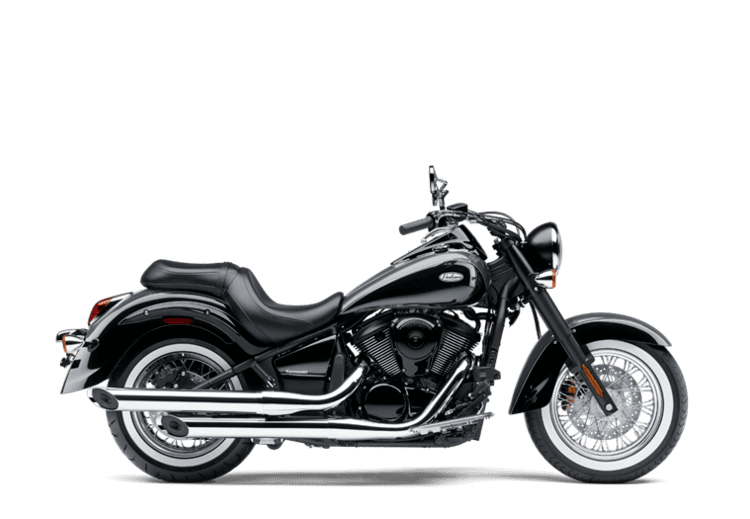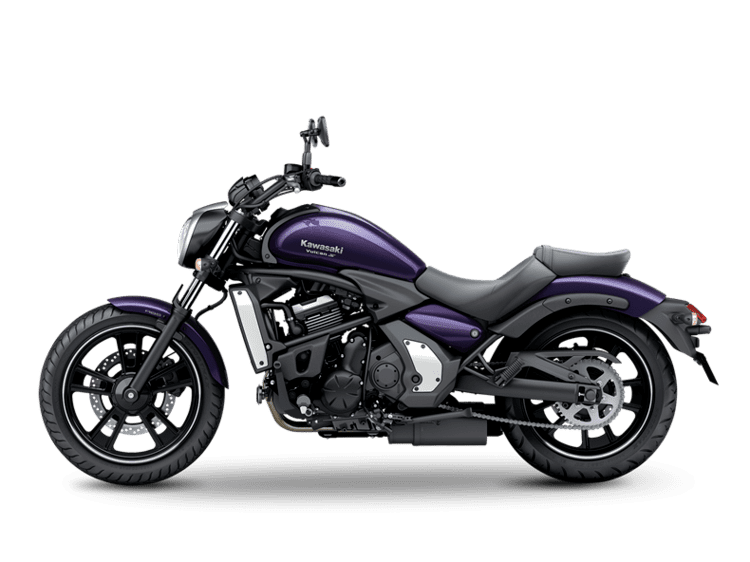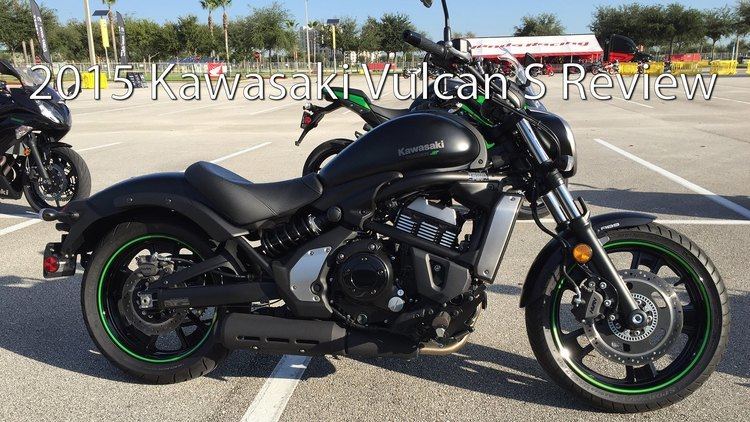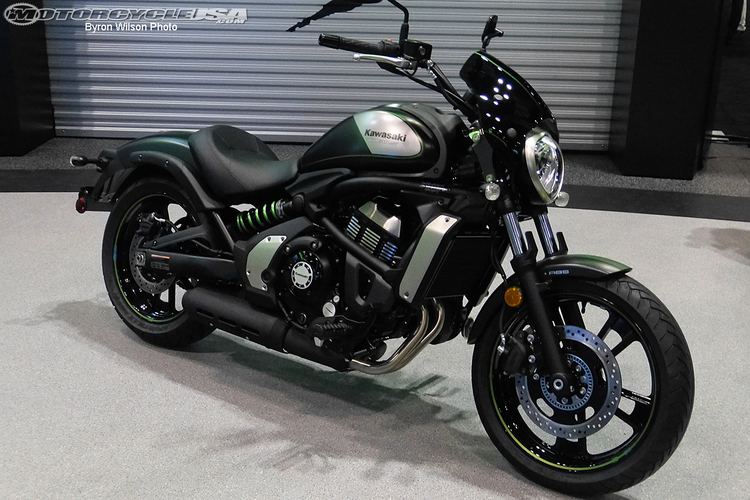Manufacturer Kawasaki Production Since 1984 | Also called VN | |
 | ||
Engine 125–2,053 cc V-twin, 500 cc parallel twin | ||
Motosx1000 test kawasaki vulcan s
The Vulcan name has been used by Kawasaki for their custom or cruiser motorcycles since 1984, model designation VN, using mostly V-twin engines ranging from 125 to 2,053 cc (7.6 to 125.3 cu in).
Contents
- Motosx1000 test kawasaki vulcan s
- 19842006 Vulcan 750 series
- 19862004 Vulcan 400 series
- 19902009 Vulcan 500 series
- 19872008 Vulcan 1500 series
- 19952006 Vulcan 800 series
- 20022009 Vulcan 1600 series
- 2004 2010 Vulcan 2000 series
- 2006 date Vulcan 900 series
- 2009 date Vulcan 1700 series
- References

1984–2006: Vulcan 750 series

In 1985 Kawasaki launched, worldwide, the Vulcan VN700A, its first cruiser powered by its first V-twin engine. The VN700A has a shaft drive. Kawasaki also made the now rare VZ 750 variant with chromed wheel arches and other subtle differences. To avoid United States tariffs on Japanese motorcycles over 700cc, the initial US model was limited to 699 cc but in 1986, the tariff was lifted so the engine capacity was increased to 750 cc. Apart from paint schemes the Vulcan remained largely unchanged throughout its 22-year production run with only minor adjustments to components.
1986–2004: Vulcan 400 series

Kawasaki introduced the Vulcan 400 in 1986 as an entry level cruiser. For a first series, The Vulcan 400 featured a 398 cc liquid-cooled twin engine, and was fitted with a belt drive and six-speed transmission. The series 2 Vulcan 400 featured a 399 cc liquid-cooled V-twin engine similar in design to the 750 The series 2 was fitted with a chain drive and five-speed transmission to reduce cost and was produced in both Classic and Drifter variations.
1990–2009: Vulcan 500 series

The Vulcan 500 (EN500A) introduced in 1990 was the successor to the Kawasaki 454 LTD. The EN500A was fitted with a parallel twin 498 cc engine nearly identical to the Kawasaki Ninja 500R. It had a 6 speed transmission and belt final drive. The EN500A was discontinued after 1996 and replaced with the Vulcan 500 LTD (EN500C). Both versions were available as 1996 models. With the EN500C the ergonomics changed as well as the engine tuning. New cam shaft profiles and slightly lower compression pistons moved the power band down to increase low end torque. Also the carburetors were downsized from 34mm to 32mm. The belt final drive was replaced with a chain. The Vulcan 500 LTD was discontinued after the 2009 model year for a nearly 20 year production run.
1987–2008: Vulcan 1500 series

The Vulcan 1500 Classic has a 1,470 cc (90 cu in) liquid-cooled SOHC 50° V-twin engine with a single-pin crankshaft. It has a 27.6-inch (700 mm) seat height, wide handlebar, forward-mounted floorboards.

The Vulcan 1500 Drifter ceased production in 2005. The Vulcan 88, with its 1464 cc liquid-cooled V-twin design was produced from 1987 through 1999. A four speed transmission was blended with the, "large for its time motor" and offered consumers a big-bore metric cruiser that was comfortable and relatively light-weight at just over 600 lbs when "rider ready".
The 1500 Meanstreak was introduced in 2002 and lasted 2 years, before giving way to the 1600 Meanstreak. This performance version of the 1500 had the same basic engine as the 1500FI, but sported several upgrades including new camshafts, larger valves, larger fuel injection throttle bodies, new high compression pistons, and re-designed combustion chamber. It also had a slimmed down narrower gas tank. This meant an increase to 72hp at 5500rpm and 90ft/lbs at 3000rpm, while weighing in at a mere 637 lbs dry.
1995–2006: Vulcan 800 series
Two models of the Vulcan were discontinued in 2006 with the introduction of the VN900. These were the VN800A introduced in 1995 and the first of Kawasaki's modern cruiser style. The VN800A featured a softail design, bobbed rear fender and a 21-inch front wheel. The second, the VN800B (Classic) was introduced in 1996 and had a retro styling that featured full fenders and 16-inch wheels on both front and rear.
2002–2009: Vulcan 1600 series
2004-2010: Vulcan 2000 series
Based and built on the same frame, the Vulcan 2000 base model, Classic, and Classic LT have only subtle differences between the variations. The most apparent is the "bug-eye" chrome nacelle projection headlight that was first introduced on 2004 Vulcan VN2000A base model. This headlight was the only offering from Kawasaki until the introduction of the Vulcan Classic VN2000D in 2006, which employed a more traditional headlight. Also introduced in 2006, the Vulcan Classic LT VN2000F. The Classic LT had an appearance similar to the Classic but added saddlebags, windshield, passenger floorboards and passenger backrest to the offering.
